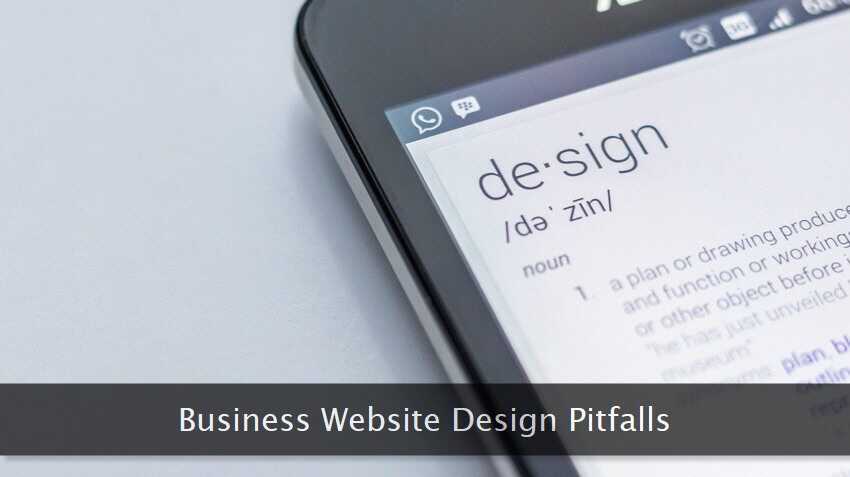When Does a Business Website Design Go Wrong?
Posted on: by Rajeev EdmondsCreating a top-notch design for a business website is a herculean task. Things get more serious if the website is selling products on the same platform. Despite spending thousands of dollars, sometimes, business owners don't get the desired result from the custom design.
What goes wrong with it? That's what we're going to discuss today. If you're a developer or a business owner, this post is written just for your consideration.

We're going to focus purely on the design aspect of the business website leaving all other factors behind. The crux of a good business website design is highlighted below.
A good web design is just an extension of your business's conversion funnel.
So, let's get started and tabulate some of the reasons, a business website design may not give the desired results.
Jazzy Homepage
Life's good when it is full of colors! Surprisingly, it is not the case with a business website's homepage. If, as a developer, you've been instructed to create a jazzy homepage with loads of bleeding escape doors, you're going to work on a—failed website.
Sounds harsh? Well, I cannot help it. That's true!
A bright colorful homepage with numerous sections talking about everything under the sun is only going to confuse your visitors. And, if you're adding a slider on top of it, it's like icing on the cake.
Pro tip - Follow the one-page - one goal principle and keep the page lean focusing on the primary call-to-action that triggers the entry point to the conversion funnel. In simple words, instead of confusing the visitor, let him see the biggest benefit and how he can avail it.
Ineffective 'About Us' Page
I've witnessed businesses building boring 'About' pages with long paragraphs of cryptic text that serves nothing. Remember, about page is all about building trust among your potential clients.
A good 'About' page clearly tabulates what the company is all about and a brief introduction to the kind of products, it offers. Do not hesitate in using graphics, photos, and illustrations embedded between short paragraphs to keep the reader glued to the page.
Pro tip - A good about page eventually persuades the visitor to go to the products page. If available, provide customer-oriented company statistics within an interactive table.
Poor Checkout Experience
As I said before, the primary purpose of a business website is to get more sales and conversions. If you've included eCommerce activity on your website, simple mistakes can lead to poor sales despite spending a lot on the custom design.
To name a few, making a customer enter tons of information, making him leave the website during payment processing, not pre-filling fields, poor exception handling are some of the pitfalls that contribute to poor sales.
Pro tip - Implement on-site payment processing and follow the best checkout page strategies to ensure you get the most out of your business website.
Inconsistent Layout & Color Schemes
This is one of the common problems often seen in websites enforced from the client's end. Drastically changing layouts and branding on different landing pages confuses the visitors and lowers the trust factor.
The most common changes are associated with the shopping pages and with the attached blog which may look sharply different from the primary website.
Pro tip - Keep the key sections (header, footer & sections styling) consistent across the entire website to ensure a visitor feels at home no matter which page he is viewing.
Serving Modal Popups
This is the last thing a poor website design can do to frustrate the viewers. Add modal popups and witness visitors complaining about it on social media platforms. It's one of the most hated web design elements among site visitors.
Modal popups can't be discarded and are often used for forced signups. Apart from bad design practices, I also consider it unethical as one should respect a visitor's preference for how he wants to use the content available on the platform.
Pro tip - While using a popup (not recommended), use discardable prompts and load them asynchronously after a visitor has spent some time on the page.
Sluggish Load Times
Time is money! In today's fast-paced world, nobody is patient enough to wait for a website opening at a snail's pace. The slower a website, the lower are the conversions.
It's a silent killer which can get unnoticed even through your web analytics program. Whether it's a homepage or a custom landing page, slow load times can trigger frustration among site visitors. This can directly affect your efforts for grabbing a lead or a sale.
Pro tip - Encourage your developer to focus on the website's speed such that it passes Google PageSpeed Insights metrics.
All comments posted here are subject to the comment policy of this blog.